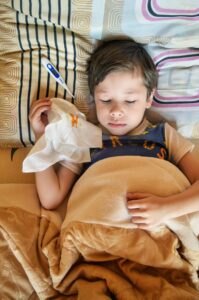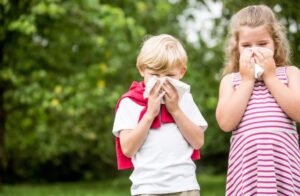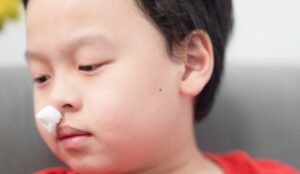Eason, a lively and adorable 5-year-old boy, recently started coughing more frequently during the winter. After some observation, his parents realized that the heating system at home was making the air extremely dry, potentially affecting Eason’s respiratory health. They decided to take steps to improve indoor air quality to protect their child’s well-being.
Dry air in winter can irritate children’s delicate respiratory systems, making them more susceptible to issues. Here are some simple and practical ways to improve indoor air quality and create a healthier living environment for your child:
1. Use a Humidifier
A humidifier is an effective tool for increasing indoor humidity. During winter, heating systems often lower humidity levels to below 20%, while the ideal range is 40%-60%. A humidifier adds moisture to the air, alleviating dryness and reducing irritation to children’s airways. However, remember:
- Clean the humidifier regularly to prevent the growth of bacteria or mold.
- Monitor humidity levels to avoid over-humidification, which can lead to mold problems.
2. Maintain Proper Ventilation
Even in winter, it’s important to ensure adequate airflow indoors.
- Open windows daily for 15-30 minutes to let in fresh air.
- If outdoor air quality is poor, use an air purifier with a HEPA filter to remove particles and harmful substances.
3. Clean and Dust Regularly
Dust, pet hair, and other allergens in the air can affect children’s respiratory health. Keeping your home clean is essential:
- Clean air conditioner and heating system filters weekly.
- Use a damp cloth or vacuum cleaner to clean furniture and carpets to prevent dust from being stirred up.
- Wash children’s bedding and toys regularly to reduce dust mites.
4. Avoid Harmful Chemicals
Many household cleaners, air fresheners, and scented products release volatile organic compounds (VOCs) that can harm children’s respiratory systems. It’s best to:
- Choose natural or non-toxic cleaning products.
- Avoid smoking indoors.
- Limit the use of strong-smelling chemicals.
5. Add Indoor Plants
Certain plants, such as spider plants and pothos, can improve air quality by absorbing harmful substances while beautifying your home. Ensure the plants are non-toxic and placed out of children’s reach.
6. Prevent Excessive Dryness
In addition to using a humidifier, you can reduce the effects of dry air with these methods:
- Place a bowl of water near heating systems to increase humidity through evaporation.
- Leave the bathroom door open after a hot shower to allow steam to flow into other rooms.
7. Monitor Your Child’s Health
Even with these measures, parents should closely monitor their child’s respiratory health. If your child experiences persistent coughing, nasal congestion, or difficulty breathing, consult a doctor promptly to rule out underlying issues.
By implementing these methods, Eason’s home became much more comfortable, and his coughing improved. Protecting children’s respiratory health requires parents’ careful attention and action.
References:
- Mayo Clinic - Indoor Air Quality and Humidity
- American Academy of Pediatrics - Tips for Winter Air Quality
- Environmental Protection Agency (EPA) - Improving Indoor Air Quality
- World Health Organization (WHO) - Air Pollution and Child Health













